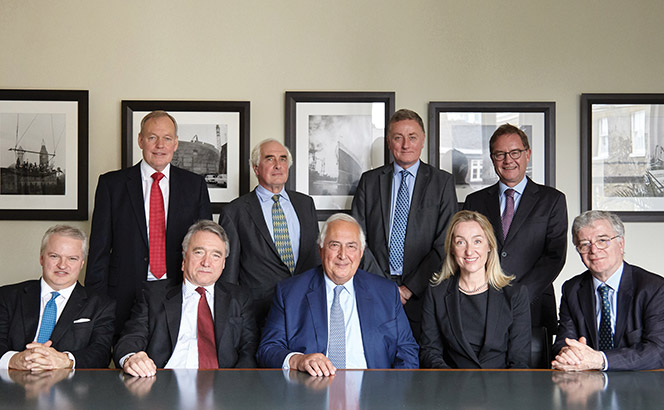The mediators of Independent Mediators discuss the changes they have witnessed in mediation in their time in practise in the field and future trends
Launched in 2007, Independent Mediators (IM) manage the practices of nine of Europe’s leading full-time civil and commercial mediators.
All nine mediators feature in the top tiers of the leading legal directories. All have been mediating full time for a minimum of ten years and in some cases for over 20 years and have mediated in excess of 8,500 matters between them. The commercial disputes mediated range in value from tens of thousands to multi-billion pounds and include almost every sector of business and law with parties from all over the UK and internationally.
In this article the mediators from IM use their many years of experience in the field to examine the advantages and disadvantages of mediation compared to litigation and arbitration, look at the changes they have seen during their time practising in the field, future trends for mediators themselves and in mediation. We should caveat this by saying this mainly refers to the commercial mediation sector as this is the area in which they operate.
What are the advantages/disadvantages of mediation?
In arbitration and litigation third parties, namely judges and arbitrators, decide the questions of law and fact that are placed before them in the pleadings. Mediation provides an opportunity for the parties themselves to resolve the issues between them in whatever manner they choose, and they are not limited to the specific issues identified in the related arbitration or litigation.
An advantage mentioned frequently and highlighted by Andrew Paton is that ‘the parties control the process and the outcome’.
Mediation is almost invariably far less costly and far less time consuming than litigation and arbitration, in terms of both preparation in advance and the actual day/s of mediation.
As with arbitration, the privacy and confidentiality synonymous with mediation are seen as an advantage. Enforceability issues are unlikely – a settlement agreement reached between the parties as a result of the mediation is legally binding once it has been reduced to writing and signed by or on behalf of the parties.
Bill Marsh cites: ‘The one most commonly mentioned advantage to me by parties is certainty. They want an outcome and an end to uncertainty so that they can get on with planning their lives and businesses.’
‘We have moved from the perception that you only mediate weak cases. Now it makes commercial sense to try to use mediation to resolve most disputes.’
In a commercial context there is the real possibility that professional trading relationships may continue after a mediation as a negotiated settlement is reached that all parties can live with and which could preserve future working relationships. Does this happen often after lengthy litigation with a perceived winner and loser?
It is sometimes said that a disadvantage of mediation is that it does not guarantee a result as not all mediations settle. With arbitration and litigation there is a result; whether it is the one the parties wanted is another matter.
What changes have you seen in mediation in the time you have been practising?
The consensus within IM is ‘huge changes.’ From a suspicious new process that no-one knew anything about, and which was described as having no place in the English system, to one that is now a key constituent of dispute resolution and widely understood and practised by many.
In the beginning there were hardly any mediators trained in the UK and users were apprehensive of using an untried process. As a result of parties using mediation and realising its advantages, excellent training of an early band of able UK mediators, reforms introduced to legal practice aimed at reducing the delay and cost of litigation and judicial support for the use of mediation, mediation moved out of the shadows into mainstream use.
Lord Woolf’s ground-breaking reforms to the civil justice system in England and Wales in the late 1990s embedded the role of ADR in the case management of civil litigation. The experience of a generation of parties brought up with and using ADR as part of commercial dispute resolution is in evidence. Now we have a large, varied and experienced group of professional mediators who practise in many areas, from the full range of commercial disputes for companies of all sizes to family, community, workplace and restorative justice. The process has become normal and achieved complete credibility in the legal profession. Case numbers have risen accordingly.
As Michel Kallipetis QC highlights: ‘There is greater awareness of the advantages of mediation, not only among the legal profession but also the commercial community. Millennials are especially receptive to mediation and are more skilled in representing parties in mediation than formerly.’
We have moved from the perception that you only mediate weak cases. Now (even aside from possible costs implications) it makes commercial sense to try to use mediation to resolve most disputes.
Nicholas Pryor states: ‘Mediations have become conspicuously harder as much more complex and difficult disputes have come to be mediated. At heart though, it is the same process.’
Lawyers are much more aware of the benefits of mediation and knowing the right time to hold one. People are mediating cases much earlier. Kate Jackson states: ‘Only once or twice have I had a client tell me that they wished they were mediating later. However, in the majority of my cases, I am told by one side (and often both…) that they had wanted to mediate earlier.’ Clients have less appetite for significant spend on litigation and do not want to expose their organisations to legal bills unless there is no alternative.
Lawyers (and often clients) are much more experienced in mediation. This makes the process more effective (and more enjoyable) as you get a sense of the parties working together with each other and the mediator to reach a solution, rather than parties and their lawyers holding themselves apart from a judge and adjudicator.
‘Mediation is being adapted to deal with disputes that would normally never have been the subject of mediation.’
Mediation is widely recognised for cross-border disputes and a good deal of the mediations undertaken within IM involve parties from overseas. The Singapore Convention, in which Kallipetis played an integral role, established a new international regime for the enforcement of mediated settlement agreements in international commercial disputes and should strengthen the credibility and status of mediation for cross-border disputes.
What future trends do you see for mediators?
More mediators are getting trained but not finding work. There is a dearth of quality because new mediators don’t get the chance to practise and hence improve. This area is vital for the future health and development of mediation. The almost universal experience is that users are quick to ascertain the quality of mediators and those who fail to prove themselves do not get used again. The Civil Mediation Council and the standards observed by providers with their own quality control systems assist in establishing and maintaining standards.
The original training courses were inspirational, imaginative and in their day a gale of fresh air for trainees brought up with limited or no negotiation training. Today the training has extended in length and complexity. However there is a greater need than ever to maintain these skills by regular personal and peer review and revision of the training at all levels to incorporate the latest thinking.
As to regulation of mediators, as a profession we currently operate a self-regulation model with a backdrop of a light-touch regulation through the European Code of Conduct for Mediators. It succeeds in keeping mediation as flexible and rule-free as possible. We do not see the need to incorporate any further regulation at this time.
What future trends do you see for mediation?
There is significant continued growth in international mediation. The emergence of mediation worldwide has been one of the trends of the last 30 years. The trend will continue with the increasing emergence of truly international mediation in investor/state issues and global commerce/multi-jurisdictional commerce with cross-border multi-party cases.
Increasingly complex matters coming to mediation have seen the mediator being asked to get involved earlier in the process and staying involved more post mediation. This has also led to an increasing use of bespoke process design with the mediator working with the parties as a process leader. There has been an increasing sophistication in the negotiation skills and techniques used by parties and mediators. Mediation is being adapted to deal with disputes that would normally never have been the subject of mediation.
Phillip Howell-Richardson comments: ‘There is increased understanding of the causes of dispute, of the scientific analysis of people under stress and the study of the art and science of negotiation behaviour. All of these and several other areas that come out of these explorations will be developed in the future.’
There is a possibility that mediation will become compulsory as legislators try to reduce the workload of the courts to save money. This is not a development IM favours as at the heart of mediation is a consensual process.
The courts have supported the use of mediation by saying you have to have a compelling reason not to use it. The case law continues to develop in endorsing this view and in adapting existing litigation practice to the mediation environment.
Arbitration initially resisted mediation, and indeed the early definitions of ADR included arbitration alongside mediation. However, the benefits of mediation are now recognised by all disputants, including those who would normally use arbitration to resolve their differences. The Singapore International Mediation Centre has devised a combination of both processes in which parties commence an arbitration which is immediately adjourned for mediation. If the mediation produces a settlement, the arbitration is reconvened, and the settlement made an award which can then be enforced under the New York Convention. This guarantees that a mediated settlement achieved under SIMC Rules is enforceable. It remains to be seen how far the Singapore Convention might affect the SIMC process.
There is likely to be more online mediation for smaller value, consumer and product liability disputes. A terrifying vista painted by a mediation colleague was that within ten to 15 years artificial intelligence will be able to carry out most litigation and mediation!
Mediation will continue to mature and develop as greater emphasis is placed on collaborative instead of adversarial processes for resolving disputes. Mediation is now an accepted norm in the process of dispute resolution in every type of dispute and long may this continue.

Charles Dodson, Phillip Howell-Richardson, Kate Jackson, Michel Kallipetis QC, Jonathan Lloyd-Jones, Mark Lomas QC, Bill Marsh, Andrew Paton and Nicholas Pryor, mediators, and Nicky Doble, chief executive, Independent Mediators.
















